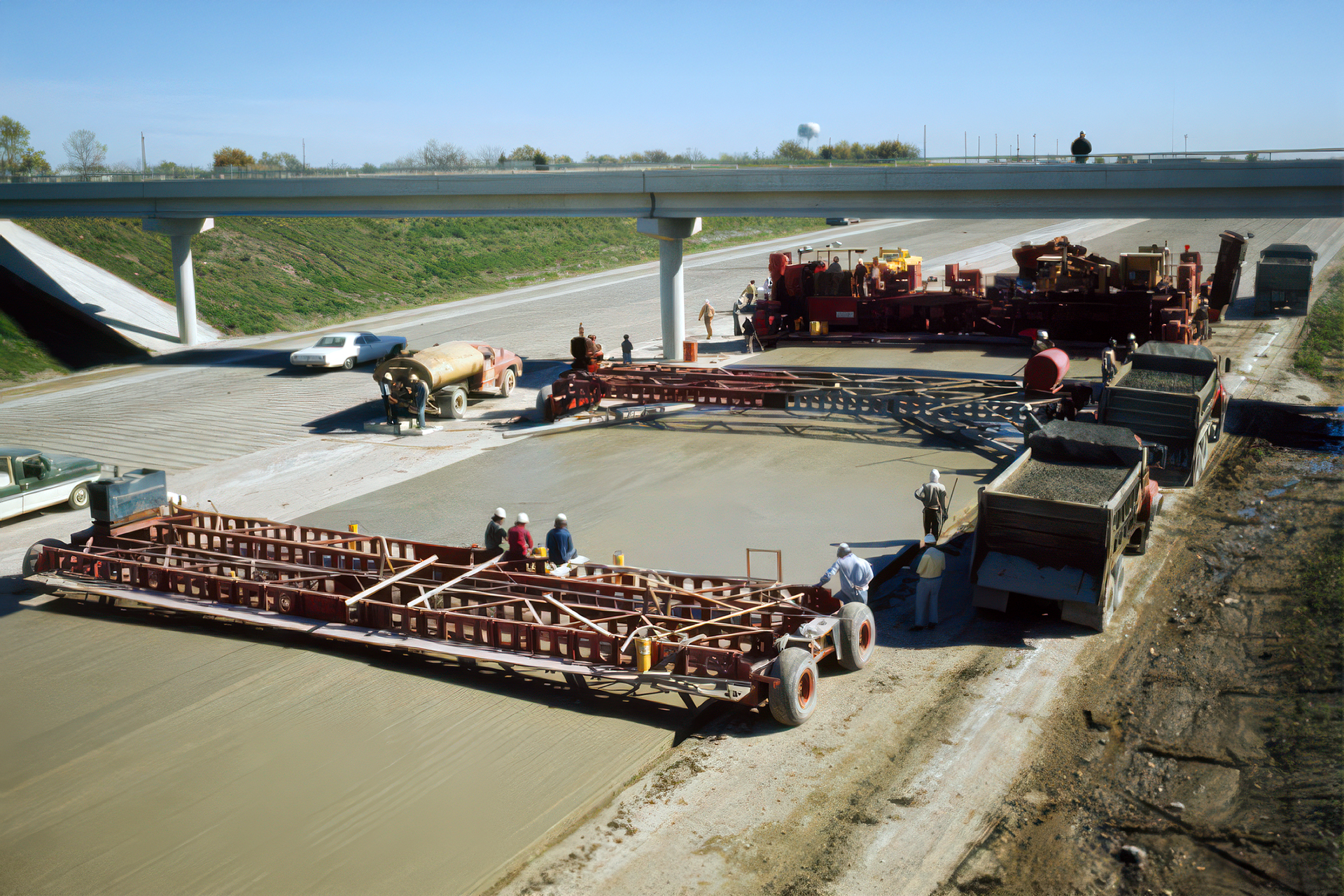
The Highways that Helped Make Arlington America's Mid-City, Part 3 of 3: IH-20
The following is an excerpt from Oscar Slotboom's meticulously researched and excellent book (and website) Dallas-Fort Worth Freeways, reprinted here with kind permission from the author.
Discussion of a freeway between Dallas and Fort Worth on the south edge of the urbanized region began around the time of the construction the Dallas-Fort Worth Turnpike in the mid-1950s when toll-averse interests wanted to secure a non-tolled freeway route connecting Dallas and Fort Worth. The Federal-Aid Highway Act of 1956 launched the full-scale construction of the Interstate Highway System, but present-day IH-20 connecting Dallas and Fort Worth was not included in the original interstate route plan. Most of Interstate Loop 820 in Fort Worth was in the original plan as was IH-635 in Dallas, which began at IH-35E and proceeded eastward. The missing Mid-Cities link was between the southeast corner of IH-820 in Fort Worth and IH-35E in south Dallas.
In 1957 the immediate task for political leaders was to prevent the designation of the Dallas-Fort Worth Turnpike as IH-20 since that would preclude the possibility of making the proposed southern freeway an interstate highway with highly desired 90% federal funding. In March 1957 Congressman Jim Wright of Fort Worth, who served on the House Committee on Public Works, worked to promote the “Southern Expressway” in the US House and local interests made presentations to the US Bureau of Public Roads in April and May 1957 in support of the interstate designation.
The bureau’s decision on this section of IH-20 in August 1957 was both good news and bad news. On the plus side, the bureau ruled that the Dallas-Fort Worth Turnpike would not be designated as IH-20, and the southern freeway remained the logical alignment for IH-20. On the down side, the bureau did not add the link as part of the Interstate Highway System.
The decision was certainly good news for the Dallas-Worth Turnpike since a competing toll-free route would have cost the turnpike authority revenue and possibly compromised its ability to meet its financial obligations. There are no official reports that the federal decision was influenced by the turnpike, but it most likely was a factor. Local officials continued to promote the freeway as a state highway project for the following seven years until 1964 when TxDOT and Washington were ready to take action.
In January 1964 a North Texas delegation made a presentation to the Texas Transportation Commission urging official designation of the freeway. In April 1964 the commission officially added the missing link of IH-20, from the southeast corner of Loop 820 in Fort Worth to IH-35E south of Dallas, to the state highway system, with an estimated cost of $34 million. Only one task remained—obtaining interstate highway status from Washington. In October 1964 the Mid-Cities link was officially made part of the Interstate Highway System. The delay in obtaining approval would ultimately be beneficial since freeway design standards had improved in the previous years, resulting in a higher quality and wider design. Construction began in 1971 and the final section of the Mid-Cities link was dedicated on August 27, 1975, with the ceremonial ribbon cut by Senator Lloyd Bentsen and his wife underneath the Camp Wisdom Road overpass.
